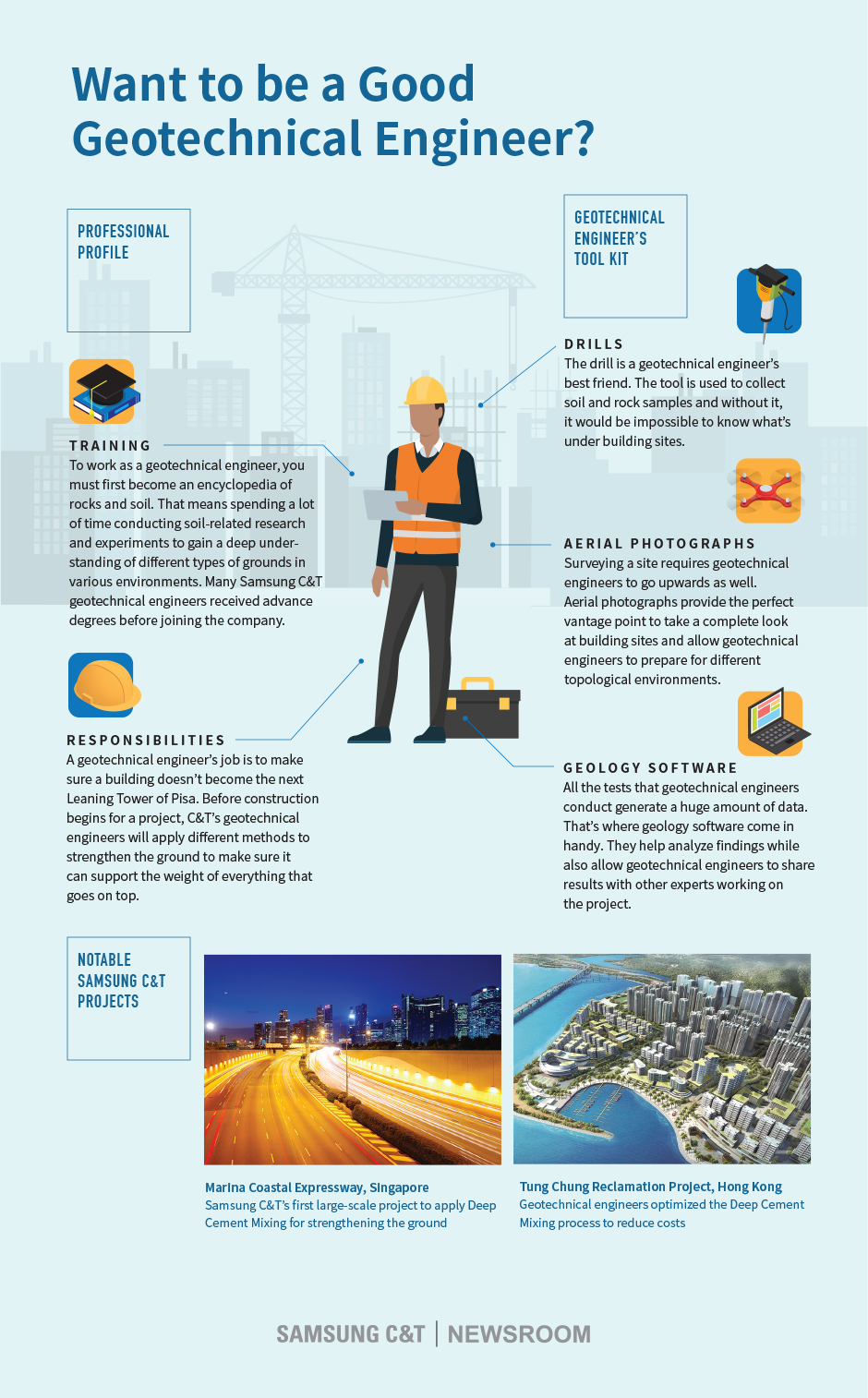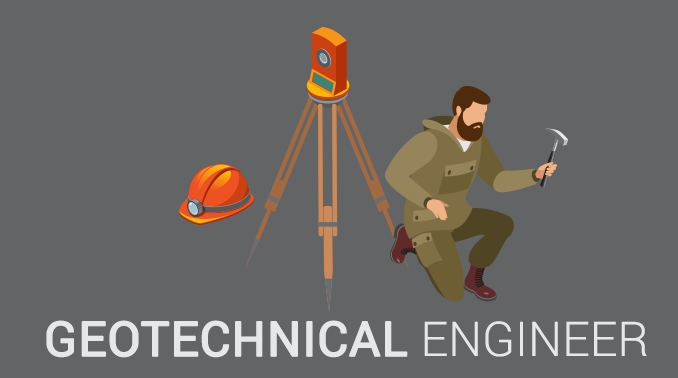The Basic Principles Of Geotheta
The Basic Principles Of Geotheta
Blog Article
The Ultimate Guide To Geotheta
Table of ContentsThe 6-Minute Rule for GeothetaGeotheta Things To Know Before You Get ThisGeotheta - TruthsGeotheta Things To Know Before You Buy
They team up with civil engineers, architectural designers, architects, and other specialists to integrate geotechnical considerations right into the general job layout and building and construction process. This requires efficient synergy, coordination, and interaction to make sure that the geotechnical aspects align with the job purposes and meet regulative requirements.Mining & Materials Design: Principles of drilling, penetration prices, and elements affecting the option of boring approach. Features of nitroglycerins, firing systems and blast patterns. Blasting methods in surface and below ground operations. Unique blowing up techniques at excavation boundaries. Resonance and sound control. Mechanical and constant approaches to fragmentation, including longwall shearing and fullface boring.
Integrated analysis of fragmentation and comminution procedures. Provided by: Mining & Materials Engineering.
Get This Report on Geotheta
Bachelor's degree programs in civil, geotechnical, geological, and ecological engineering generally last 4 years and include basic education and learning training courses in English, social scientific research, and the humanities, along with programs in sophisticated mathematics, architectural geology, and liquid mineralogy. (https://moz.com/community/q/user/geotheta?_gl=1*xkyvtd*_up*MQ..*_ga*NjU0Mjk2NzIxLjE3MjI2MDU1Nzc.*_ga_DS7K9Q3S5W*MTcyMjYwNTU3Ni4xLjAuMTcyMjYwNTU3Ni4wLjAuMA..)
Geotechnical engineering involves the assessment of the soil and rock conditions at a particular site, and their implications for the advancement of that site. As a lot of frameworks rely upon the ground for assistance, it is without surprise that a detailed understanding of the ground problems, and the suitability of structure systems, are essential to the long-lasting stability and performance of the structure or structure.
Specialising in the investigation of geological formations and ground behavior, geotechnical designers execute scientific examinations and screening to comprehend the effect these geological developments might carry the design and building of building, civil and infrastructure tasks. This expertise is important for the design and construction of structures, roadways, tunnels, dams, bridges, and water system and sewer systems.
The geotechnical team at Douglas Allies routinely seek advice from designers, design engineers, programmers, and contractors to make recommendations on style and growth propositions to make sure that the developed frameworks are appropriately developed for the ground problems. The style of footing systems needs to think about the weight of the framework, the ability of the ground to sustain that weight together with movement resistances and effective building.
How Geotheta can Save You Time, Stress, and Money.
This job is substantially simplified by the use of our Douglas Map geospatial system which makes this information conveniently accessible in a simple to use web internet browser interface. A geotechnical designer will certainly direct the drilling of boreholes and test pits to accumulate soil and various other examples, and also examine surface attributes and ground direct exposures to form a geotechnical design of the subsurface conditions.
Depending on the job type and ground conditions came across, research laboratory screening may to name a few points examine strength, compressibility, reactivity and/or permeability of soil and rock samples. Hereafter information is gathered and collected, the outcomes are made use of for a geotechnical design of the site, which is usually offered as sections throughout the website.

A geotechnical examination by nature can only evaluate the ground conditions at the areas pierced or dug deep into. Natural variations in soil and rock conditions can happen throughout a website and in between test areas. It is as a result good method that the geotechnical engineer be retained throughout building of the job to supply on-site verification that the ground conditions come across are constant with the expectations and recommendations provided in the geotechnical examination report.
The Definitive Guide to Geotheta
Geotechnical engineers use their comprehensive expertise of soil and rock to analyze threat and solve problems on diverse facilities projectsGeotechnical engineering is a specialist branch of civil engineering which considers the practices of earth products and the application of soil and rock auto mechanics. Consulting Engineers. As a geotechnical designer, you will certainly analyze the physical, mechanical and chemical buildings of soil and rock in order to create foundations, preserving frameworks and earthworks
Geotechnical design is carefully linked to and overlaps with, pop over to this web-site both design geology and ground engineering - https://anotepad.com/note/read/ew8kqmw7. It's feasible to be experts in geotechnics or work for a geotechnical company but be understood as an engineering geologist or a ground designer. As a geotechnical designer, you'll need to: develop and keep relationships with clients and various other specialists associated with the site, throughout each projectmaintain safety requirements on site bear in mind expense implications when you make recommendationsstudy geological maps and airborne pictures from a variety of sources and from various time periodsexamine construction intends to see exactly how practical they are based on your understanding of the siteinvestigate threats or geological threats for the sitesearch for environmentally sensitive features, such as land fill start to develop valid and interpretive ground modelsplan area investigationsdrill and evaluate examples of bedrock, soil, groundwater and added products supervise various other specialists on sitesolve technical concerns as they emerge, such as unforeseen frameworks at drill sitesmonitor problems during and after building to see to it frameworks are secure in the short and lengthy termadding information collected on website to your first researchcreating geotechnical calculations, illustrations, and 2 or three-dimensional computer system versions interpreting the datamaking recommendations about the suggested use of the website

Report this page